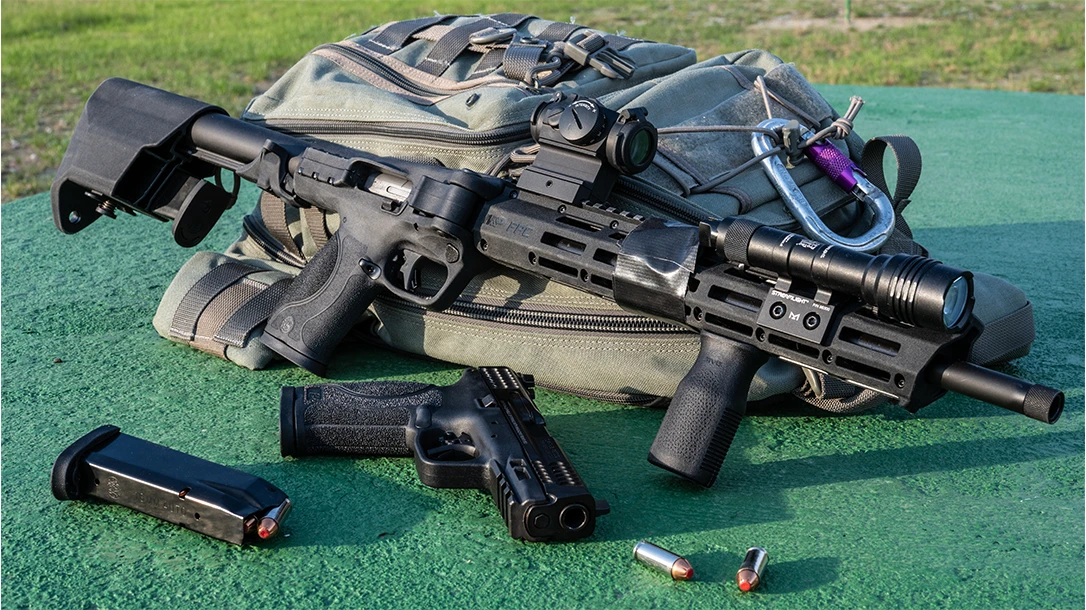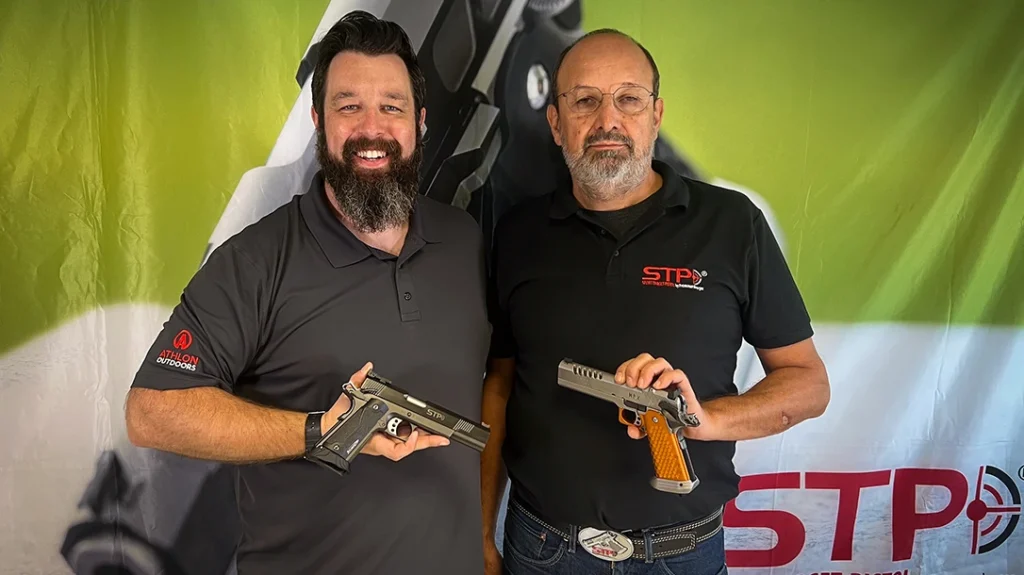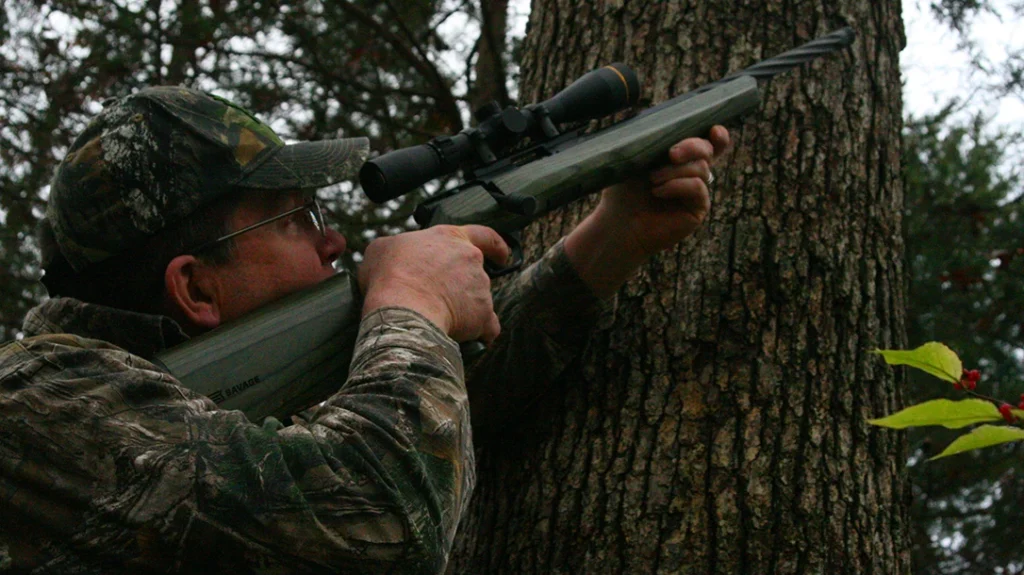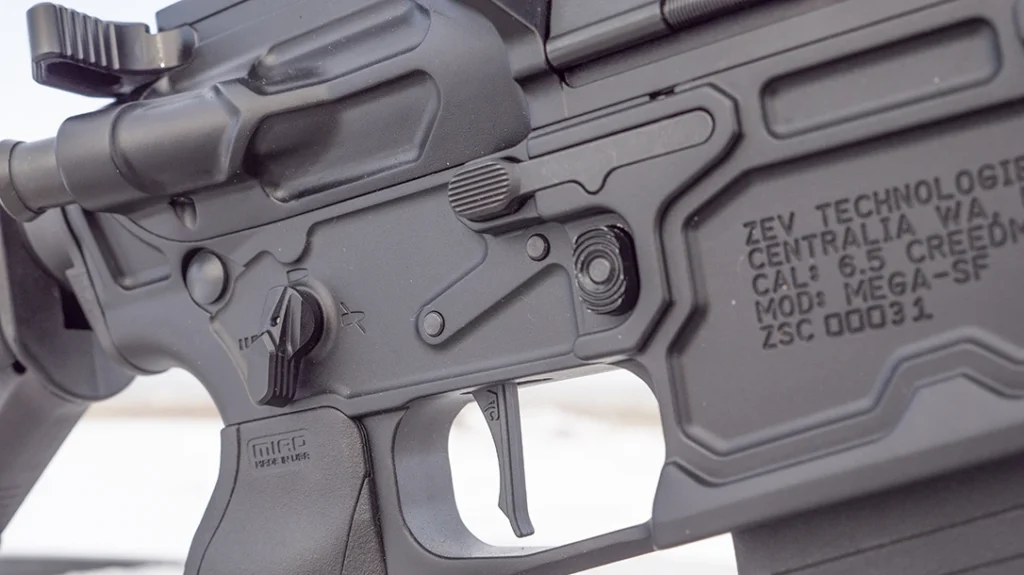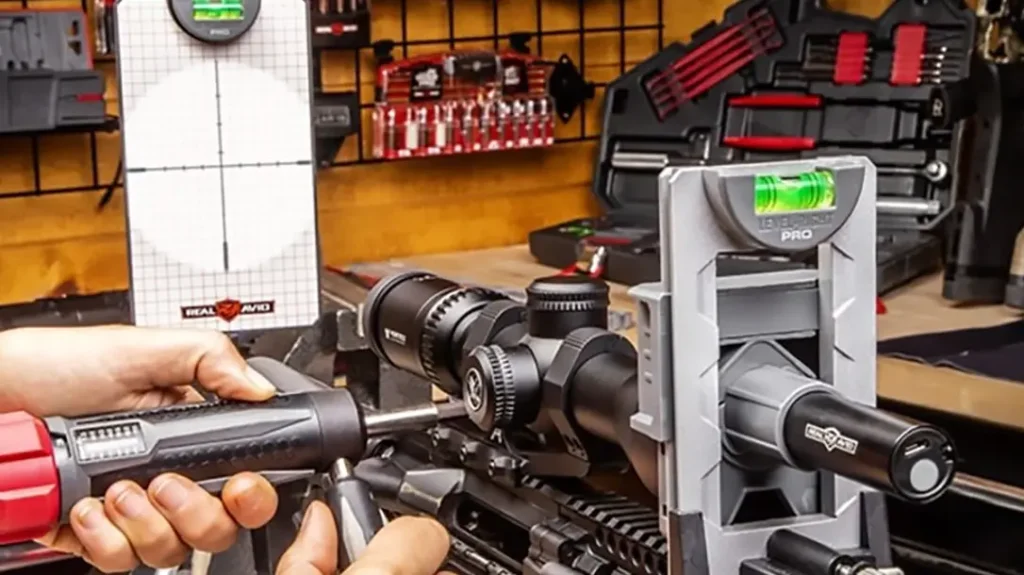This post was originally published on this site.
Ever since the days of my youth, I’ve been a huge fan of sharing ammo between a handgun and a carbine. It always made sense to me logistically, since you only had to carry one type of ammunition. You also get the longer sight radius and the increased velocity on a firearm that’s easier to shoot more accurately.
What’s not to like?
Advertisement — Continue Reading Below
I’ll admit that my admiration began while watching old Western TV shows and movies, where the shooters carried single-action revolvers and lever-action rifles of matching calibers–guns like the classic Colt Single-Action Army and the Winchester 1873 chambered for black-powder .44-40 cartridges come to mind.
But a lot has changed since then.
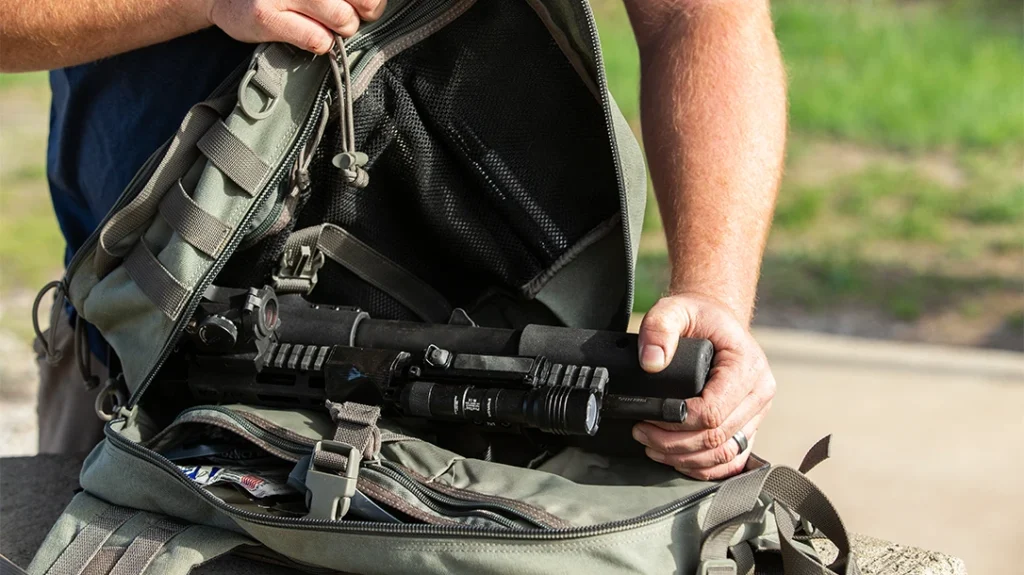
Advertisement — Continue Reading Below
Now we have rifles like the AR-15, with an infinite number of variants and clones. And with chamberings such as 5.56 NATO, .300 Blackout, .300 HAM’R, 6.5 Grendel and 6.8 SPC, this new crop of rifles certainly offers more power than the pistol-caliber carbines of old.
But these modern rifles, even in a compact form factor, still have some drawbacks. I think there’s still a case to be made for PCCs. I’ll make my points while reviewing the new Smith & Wesson FPC in 10mm.
Introducing The FPC
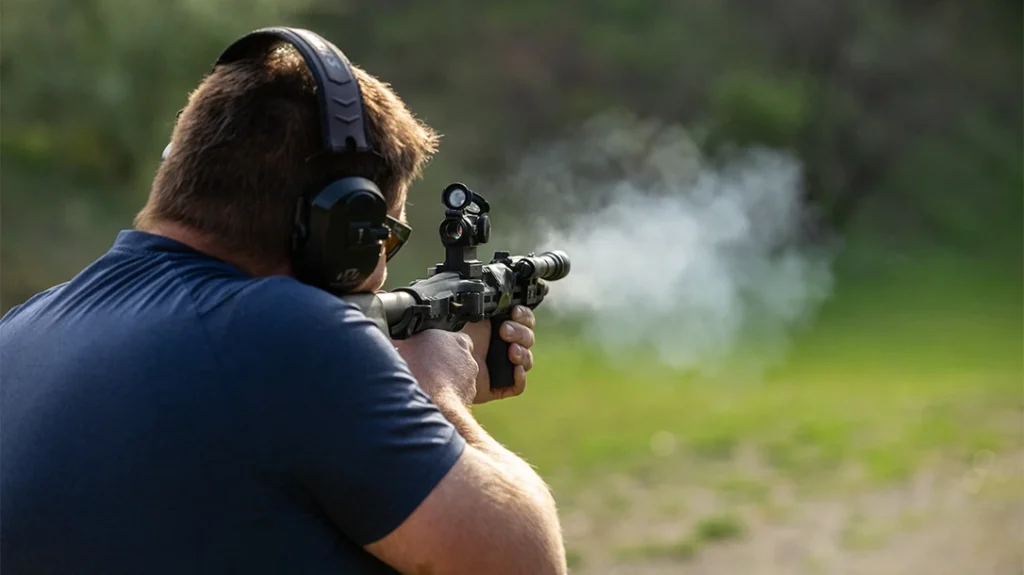
Advertisement — Continue Reading Below
Many pistol-caliber carbines have similar designs, many of which look like sub-machine guns or “mini AR-15s”. The Smith & Wesson FPC differs from most of these. In essence, the FPC is an M&P 2.0 pistol with a stock and a longer barrel. Its lower resembles an M&P 2.0 frame with the same style grip, texturing and interchangeable backstraps. Its magazine well is located at the bottom of the grip like any other semi-auto pistol. Even its controls resemble the M&P 2.0–except for its cross-bolt safety.
My 10mm FPC sports a 16.25-inch barrel that’s enveloped by a handguard of nearly the same length. This handguard also has an impressive number of M-LOK slots that makes accessory mounting rather easy.. The barrel’s muzzle is threaded to 9/16 x 24 TPI in order to allow the user to mount a suppressor or brake. There’s also a full-length Picatinny rail on top of the FPC to mount optics, slings and lights/lasers.
The first thing you’ll notice at the rear of the FPC is a charging handle on the stock tube. Despite its similarity to the M&P 2.0, the FPC doesn’t have a slide to rack so a charging handle is necessary. There’s also a storage area where you can stow two extra magazines located underneath the FPC’s stock.
Advertisement — Continue Reading Below
It Folds!
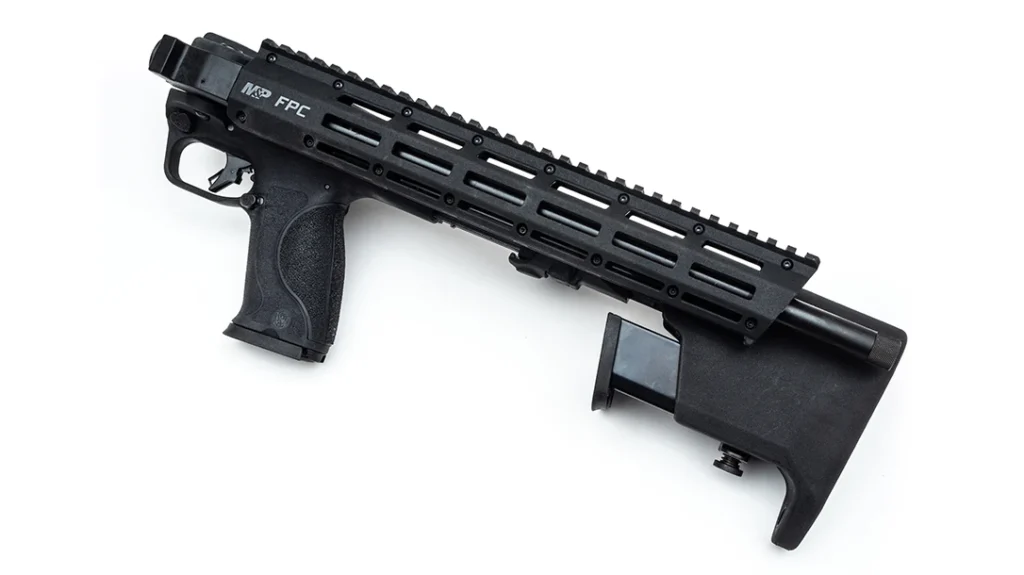
However, the FPC has one hero feature: its ability to fold in half. This is done via a hinge assembly. In its unfolded state, the 10mm FPC has a length of 30.6 inches. Folded in half, that length drops to just 16.5 inches. This makes the Smith & Wesson FPC an extremely compact package that’s easily carried in a small daypack. In fact, my favorite EDC pack is the Maxpedition Kodiak Gearslinger. My FPC fits into the main cargo area easily with plenty of room to spare for magazines, an IFAK and other gear.
Keep in mind that Smith & Wesson isn’t the first gun manufacturer to develop a foldable pistol-caliber carbine. Kel-Tec beat S&W with its Sub-2000 a couple of decades ago. The Sub-2000’s main issue is that it folds from a top hinge. With an optic, it makes it difficult to fold completely flat. That’s not an issue with the S&W FPC because it folds from the side so optics will not interfere whatsoever.
Advertisement — Continue Reading Below
The Case For The FPC
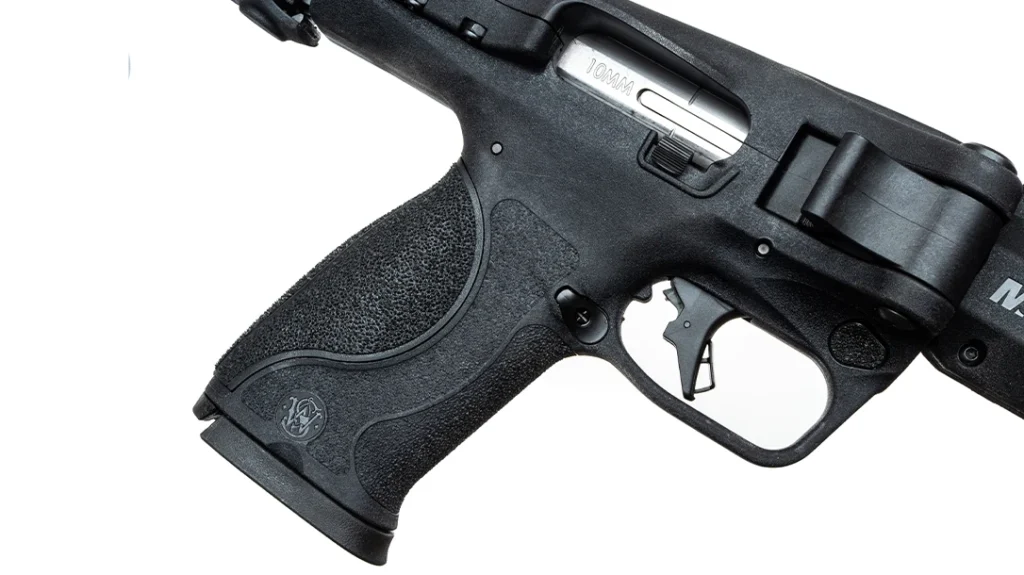
There’s no denying the cool factor in using the same magazines in a PCC as your main carry pistol, but that’s not argument enough. When it comes to the Smith & Wesson FPC, the 10mm Auto cartridge brings a good bit more power compared to 9 mm or .45ACP. So it has that going for it.
This firearm also has a full-length, 16.25-inch barrel at its disposal that bumps up muzzle velocity and muzzle energy. There’s also the fact that it folds so easily. In addition, it already holds three magazines, which translates to an extra 45 rounds of ammunition on board. And once again, these magazines can also be shared with your M&P 2.0 10mm EDC pistol. The FPC itself gives you the stability and better shooting potential of a PCC.
Advertisement — Continue Reading Below
Even better, the FPC is considered a rifle, not a pistol. That means you can attach a vertical foregrip for even more control without running afoul of any NFA issues or annoying ATF rules.
We can make arguments in favor of this design all day, but there’s nothing like actually putting the FPC to the test with live rounds.
A Little Extra Sauce
To prepare for this review, I dressed out the FPC with a few things just to see how everything would work together and whether it would still pack away cleanly.
I mounted an Aimpoint Micro H2 optic, a Magpul M-LOK MVG vertical grip and a Streamlight Protac Rail Mount 2 weapon light.
I also brought along an actual M&P 2.0 10mm pistol, the 4-inch model. The whole point of the discreet nature of the FPC is the sharing of magazines. Having this handgun on hand was also valuable considering its utility as a carry-gun.
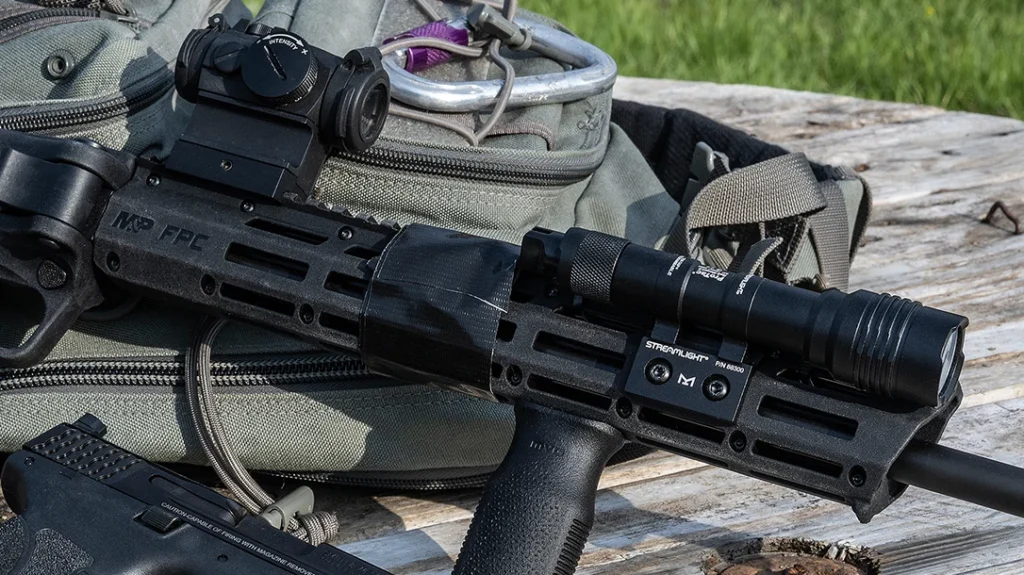
Unpacking, Folding, Deploying & Shooting
To review the FPC, we shot at IDPA and steel targets. In addition to ammo featured in the performance chart below, we also included Sig Sauer’s 180-grain Elite Ball and Federal’s 180-grain American Eagle. During all of that shooting, we didn’t encounter a single malfunction of any sort. Despite the FPC using blowback operating system, the recoil wasn’t bad at all. Sure, you could feel an impulse and snap with each shot, but a secure hold against the shoulder turns it into more of a push. If you can shoot 10mm in a pistol, then this carbine is no problem.
The trigger on the FPC is pretty decent. It’s similar to what you’ll find on M&P 2.0 pistols these days, but maybe not quite as crisp. However, for its intended purpose, the FPC had a fairly light trigger break at an average of 4.75 pounds. Not too heavy to interfere with accurate shot placement and not so light as to easily touch off an accidental discharge.
Out of the box, the FPC has an awkward balance point when it’s unfolded. It has a very back-heavy bias that only gets worse with two fully loaded magazines in the storage area. Thankfully, the FPC is relatively lightweight so that back-heavy bias isn’t too hard to overcome and you’ll get used it the more you handle and shoot the FPC.
Finally, releasing the magazines from the buttstock storage area takes some getting used to and it would benefit the user to train on that aspect a good bit to get faster reload speeds. There’s a tab on the bottom that you push on, and whichever side you push on, the magazine on the opposite side gets released. But hey, I’ll take extra storage any day.
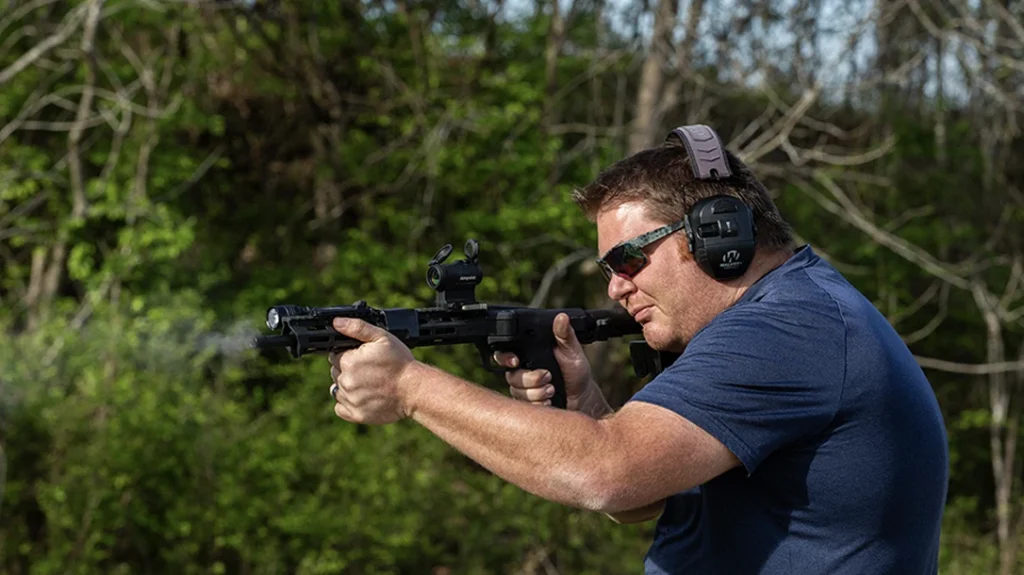
The FPC’s Barrel Boosting Wonders
We shot a few different ammo brands for accuracy testing. Our test ammo included Hornady’s 175-grain Critical Duty, Remington’s 180-grain Golden Saber Bonded, Sig’s 180-grain Elite V-Crown and Underwood’s 155-grain XTP load.
To be honest, I was surprised how good the accuracy was across the board at 25 yards, especially the FPC’s folding nature and with my vision limitation. The average group size for all loads was 1.24 inches, but Hornady took the prize with an average group size of 1.16 inches, and it had the single best group of .75 inches.
But Remington’s Golden Saber load was chomping at its heels with a best group of .93 inches and an average group size just two-one-hundredths more than Hornady at 1.19 inches. And keep in mind, this was done with aging eyes and a non-magnified Aimpoint red-dot.
We wasted no effort to concurrently chrono the muzzle velocities of the 10 mm companion 4-inch M&P 2.0 alongside the FPC carbine. We found an average velocity boost of around 150-230 FPS from the FPC’s longer 16.25-inch barrel.
For example, the Hornady 175-grain Critical duty load traveled at 1232 FPS out of the FPC and 1078 FPS from the M&P 2.0 pistol–a difference of 154 FPS. There was a bigger spread with Underwood’s 155-grain load with it running 1487 FPS out of the pistol and 1702 FPS out of the FPC, a difference of 215 FPS. More numbers are in the accompanying chart below.
Centimer Power
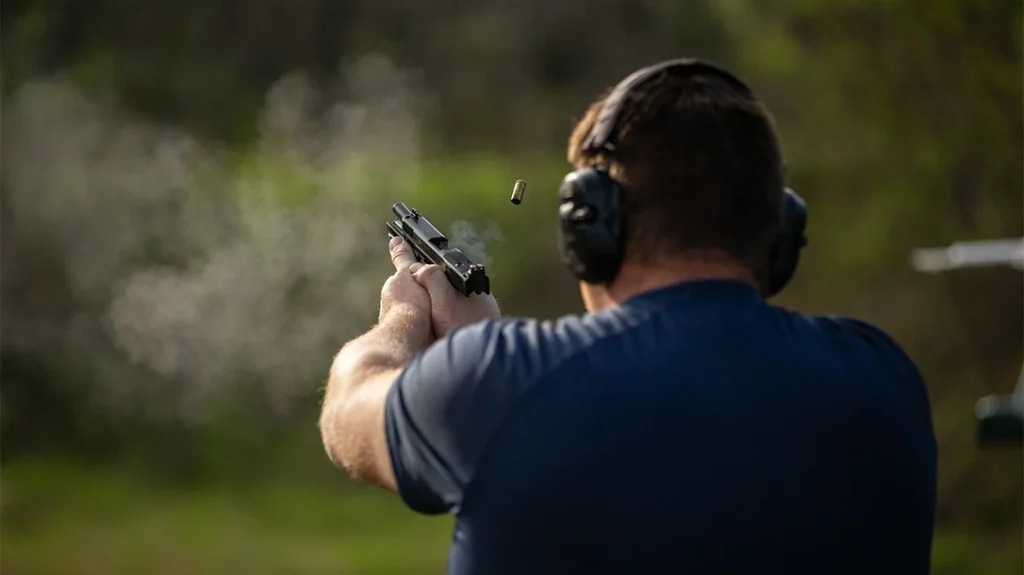
We also calculated the muzzle energy numbers of the various loads. 180-grain bullets are pretty much the standard load for 10mm and they already offer a good deal of power compared to other pistol calibers. For example, the Sig and Hornady loads have around 600 foot pounds of energy. The 180-grain Sig load, however, must have a bit more charge to it since it delivers about 781 foot pounds of energy.
The lighter155-grain Underwood load ended up clocking in at 998 foot pounds of energy. Sure, the bullet weighs less but that allows it to travel at higher velocities. In turn, it can register those bigger numbers.
That said, if you’re hanging out in the backcountry and worried about dangerous wildlife, you might want to stick to 180-grain and heavier loads that can deliver better penetration to tear up deep muscle and break bones.
But for self-defense against two-legged predators, the nearly thousand foot-pounds of kinetic energy from the Underwood load would work rather well.
My Verdict
Just to get this out of the way right of the gate, do I think the FPC is the best pistol-caliber carbine ever? No, I don’t. Do I really, really like it? Oh, yes.
There are a few carbines that have better triggers, more intuitive operating controls and better ergonomics.
Some of the FPC’s features like the magazine storage area and charging handle are a little wonky to operate. However, it’s important to look at the big picture perspective and keep the FPC’s specific role in mind.
Thanks to its folding nature, the FPC shines in discreet carry applications while not making the end-user have to compromise over “pistol” performance. FPCs are basically go-anywhere carbines that not only deploy in a jiffy but also bring an extra 30 rounds along for the ride. And that’s in addition to the 15-round loaded magazine. Of course, this feature shines even more when the FPC is carried in tandem with a 10mm M&P 2.0 pistol.
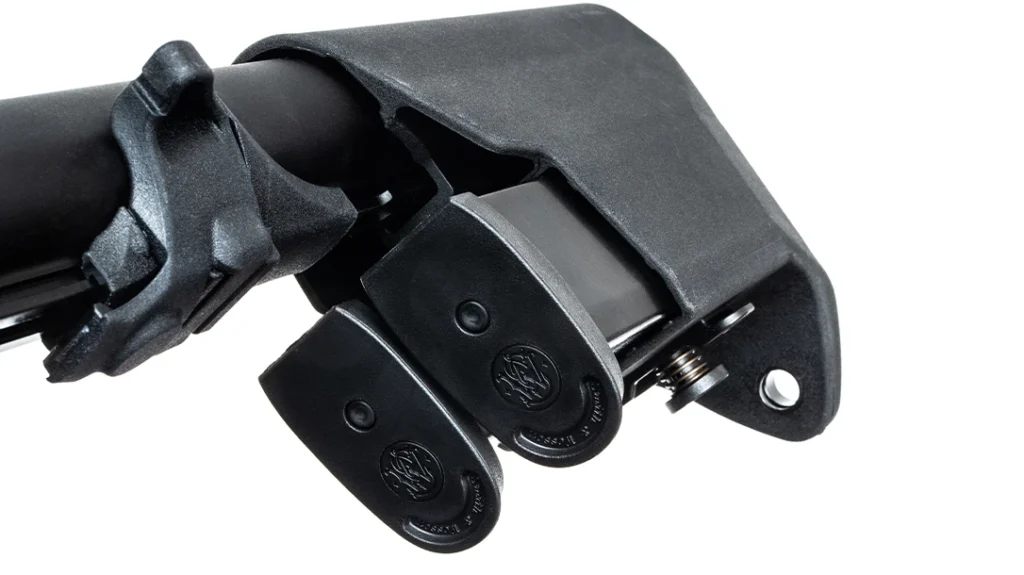
And, no, not everything was perfect with the FPC. First, it does not come with any type of iron sights, so you’re on your own there. I noticed that the FPC’s extended magazine release got bumped easily during handling. This caused the magazine to fall intermittently.Also, the charging handle was a little wonky, feeling a little sluggish at times and it’s not exactly in the best position for fluid and intuitive cycling. But there’s not much you can do about that with the FPC’s design parameters.
I do wish Smith & Wesson offered 10 mm magazines that held more than 15 rounds to directly accompany the FPC. Currently, Smith & Wesson only has exactly one double-stack magazine pattern for 10 mm. It’s capped at 15 rounds–not terrible for a handgun, but it can be lacking for a carbine. Offering a 20 or 25-round magazine would work so well with with the FPC all things considered.
Hinging Thoughts
When you compare all of the Smith & Wesson FPC’s features, its design and its MSRP of $699 against other 10 mm PCCs on the market, the FPC is loaded with value.
Despite its unique design, the FPC is nicely built, very reliable, has a reasonably nice trigger and plenty of attachment points for accessories. Most importantly, this Smith & Wesson carbine shoots extremely well.
In fact, I believe that statement so much that I ended up purchasing the carbine featured in this review–along with that M&P 2.0 10 mm to accompany it.
I can’t think of a better endorsement I could give other than shelling out my own money for something. If you’re looking for a 10 mm carbine that can be carried discreetly wherever you go, I’d highly suggest that you check out this new FPC. It might be exactly what you’re looking for and you can thank me later!
Smith & Wesson FPC Specifications
- Caliber: 10mm
- Unfolded Length: 30.6 inches
- Folded Length: 16.5 inches
- Height: 8 inches
- Width: 2 inches
- Barrel: 16.25 inches (Threaded 9/16 x 24)
- Weight: 5.7 pounds
- Stock: Synthetic (w/extra mag storage)
- Action: Semi-Automatic (Blowback)
- Finish: Anodized/Matte Black
- Capacity: 15+1
- MSRP: $699
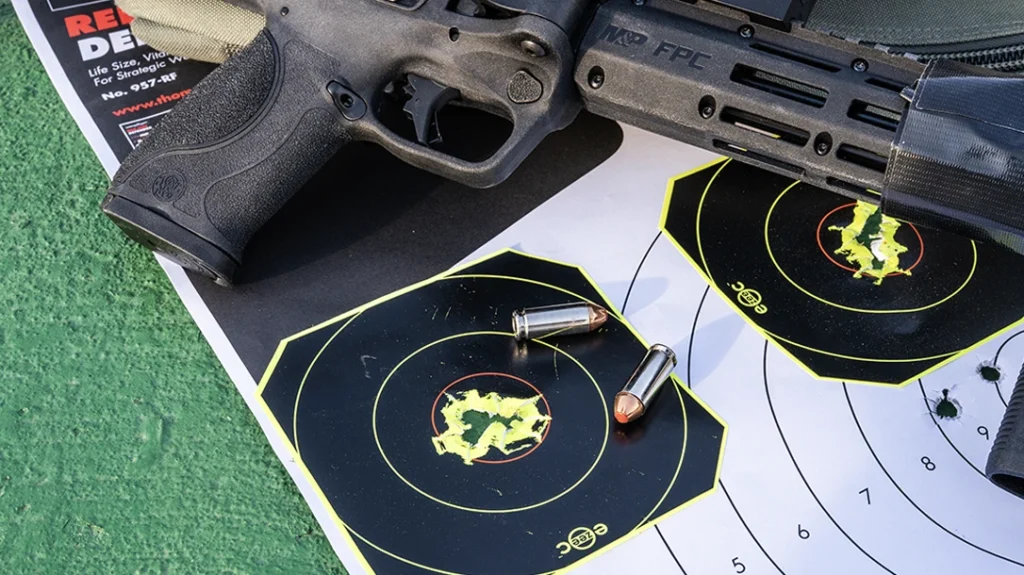
Ballistic Performance
| Hornady 175-grain Critical Duty | |
| Average Velocity | 1,232 FPS |
| Best Group | 0.75 inches |
| Average Group | 1.16 inches |
| Muzzle Energy | 590 FPE |
| Remington 180-grain Golden Saber | |
| Average Velocity | 1,259 FPS |
| Best Group | 0.93 inches |
| Average Group | 1.19 inches |
| Muzzle Energy | 634 FPE |
| Sig Sauer 180-grain Elite V-Crown | |
| Average Velocity | 1,398 FPS |
| Best Group | 1.12 inches |
| Average Group | 1.31 inches |
| Muzzle Energy | 781 FPE |
| Underwood 155-grain XTP | |
| Average Velocity | 1,702 FPS |
| Best Group | 1.02 inches |
| Average Group | 1.29 inches |
| Muzzle Energy | 997 FPE |
Bullet weight measured in grains, velocity in feet per second 15 feet from the muzzle by a Caldwell Ballistic Precision chronograph and accuracy in inches for three, five-shot groups at 25 yards.
WHY OUR ARTICLES/REVIEWS DO NOT HAVE AFFILIATE LINKS
Affiliate links create a financial incentive for writers to promote certain products, which can lead to biased recommendations. This blurs the line between genuine advice and marketing, reducing trust in the content.
The post S&W Remakes The M&P Into A Foldable Carbine appeared first on Athlon Outdoors Exclusive Firearm Updates, Reviews & News.
